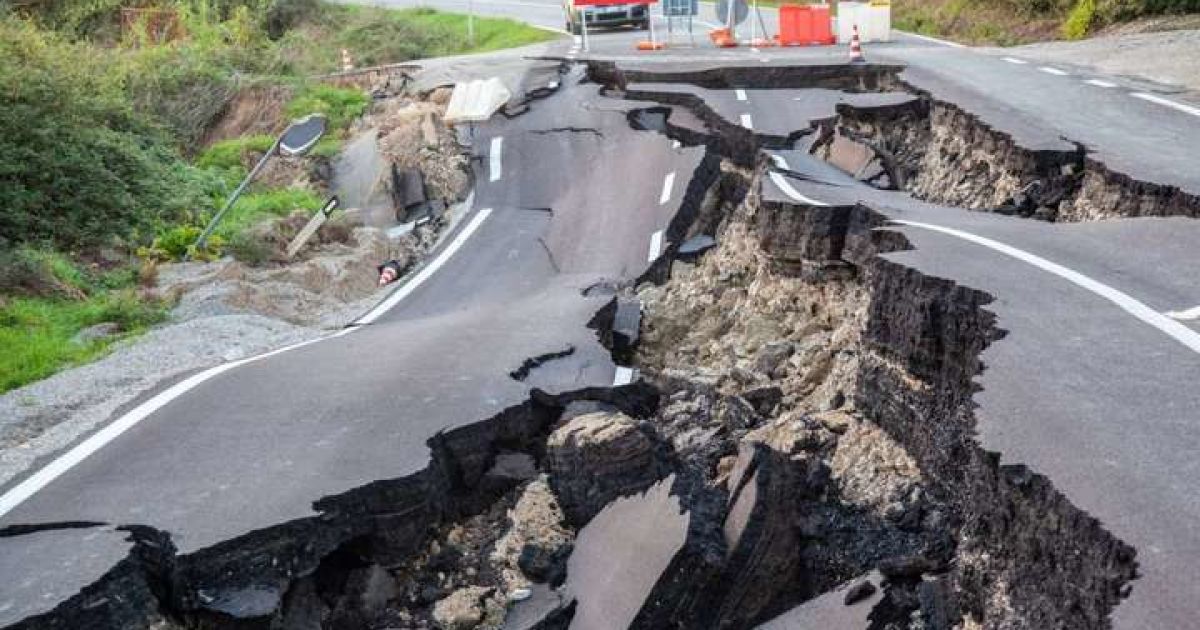Earthquakes in Ukraine
Earthquakes are subterranean jolts and vibrations of the Earth's surface that occur as a result of sudden displacements and ruptures in the Earth's crust or the upper mantle of the Earth, which are transmitted over long distances in the form of elastic vibrations.
Every year, on average, about 58,000 earthquakes occur in the world.
But they still cannot determine exactly where and when the next underground tremor will occur.
The most powerful earthquakes felt in Ukraine were in 1977 and 1981, with a magnitude of 7 or more.
And the earthquake that occurred on March 4, 1977, which lasted less than a minute, is considered the most powerful.
At that time, underground shocks were felt not only in Ukraine, but also in a large area of the East European Plain.
In the epicenter, in Romania, its intensity reached 8-9 points.
According to official data, the number of victims in Romania was one and a half thousand people, dozens of houses were destroyed.
There were also destructions in neighboring Bulgaria.
There were no victims in Ukraine, residents of some regions felt vibrations when furniture, chandeliers, dishes, etc. moved.
More than 30 earthquakes have been recorded on the territory of the Crimean Peninsula, the catastrophic earthquake of 1927 had an intensity of 8 points.
Earthquakes were recorded in Kyiv in 1940, 1977, 1986, 1990, and 2004.
The power of the last earthquakes did not exceed 5 points.
According to experts, the maximum possible strength of an earthquake in Kyiv is 5.5...6 points.
On October 27, 2004, there was an earthquake with a magnitude of four, the previous one on May 30, 1990 – with a magnitude of 5.
The old development of Kyiv was carried out with the calculation of 5 points, therefore tremors of 5 points were considered safe, Kyiv was not included in the seismically dangerous zone.
Now these norms have been revised due to the construction of buildings higher than 25 floors.
Such houses are considered dangerous objects, so a large reserve of stability is laid in them.
They will definitely withstand six-foot shocks, but cracks may appear in the partitions.
Thus, shocks of 6 points are an acceptable risk for Kyiv.
But during such an earthquake, the Stalinist and Khrushchev buildings, which were built using a coefficient of 5 points, can be damaged.
For understanding, during an earthquake of 12 points (the maximum number), the landscape changes, the location of large lakes and rivers, the structure of the relief.
It is impossible to prevent an earthquake, but in the case of a warning about the threat of an earthquake or the appearance of its signs, you should act quickly and without panic.
Earthquake in Turkey and Syria on February 6, 2023
Recommendations.
how to act during earthquakes
If you were warned about the earthquake in advance,
before leaving the apartment, you must turn off the heating devices and gas, if the stove was burning, turn it off.
Take the necessary things, a supply of food, medicines, documents and go outside.
On the street, you should move away from buildings and structures as quickly as possible in the direction of squares, wide streets, squares, sports grounds, undeveloped areas.
Earthquakes cause stressful conditions in people, up to mental disorders. An acute motor reaction is often followed by a depressive state with general motor retardation.
As experience shows, a large part of the injuries received among the population is explained by the unconscious actions of the victims, caused by a state of panic and fear.
Therefore, it is very important
to force yourself to remain calm
and not do anything that can disorganize the environment.
If
you are indoors,
move to a safe place.
Hide, if possible, under a desk or dining table.
Stand in the opening of an interior door or in a corner of the room.
Protect yourself from debris or heavy furniture.
Stay away from windows and heavy objects that can tip over or move.
Do not run out of the building.
Debris falling near the building is the greatest danger.
It is better to seek rescue where you are, wait for the end of the earthquake and then calmly leave the premises if necessary.
If you are in a tall building,
do not rush to the stairs or elevators.
Exits are likely to be crowded and elevators are mostly out of service.
Seek salvation where you are.
Do not be alarmed if the electricity is turned off or
alarm signals of elevators, fire-fighting installations or security systems start ringing, be ready to hear the sound of clinking dishes, the crack of walls, the rumble of falling objects.
If
you are in a brick building or other dangerous structure
and realize that it is better to leave the premises than to stay inside, run out quickly but carefully, avoiding falling bricks, broken wires and other sources of danger.
If you
pass by a tall building, stand in the doorway
to avoid falling debris.
If you are outdoors,
try to get out into the open, away from buildings and power lines.
If
you are traveling by car
, stop calmly as far as possible away from tall buildings, overpasses and bridges.
Stay in the car until the disaster ends
Don't be surprised if you feel
new tremors.
After the first strong jolt, there may be a temporary lull, followed by another jolt. These may last for a few minutes, a few hours, or even a few days.
Read also:
The devastating earthquake in Turkey on February 6: all the details, photos and videos
The prime minister's sister died under the rubble in Syria along with her children and grandchildren
